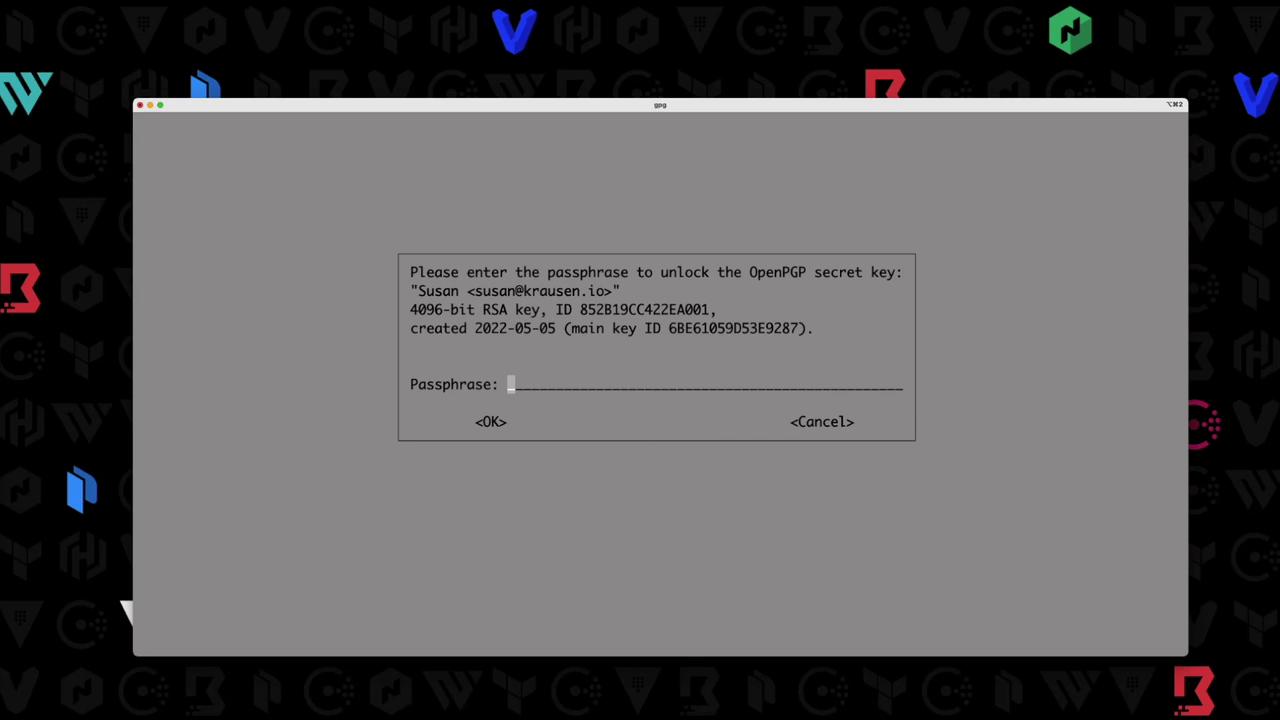HashiCorp Certified: Vault Operations Professional 2022
Create a working Vault server configuration given a scenario
Demo Practice secure Vault initialization
This guide demonstrates how to initialize HashiCorp Vault with encrypted recovery keys and a root token using public OpenPGP keys. In this example, we’ll use three public keys—btk.pub, frank.pub, and susan.pub—located in your current directory.
Prerequisites
- Vault server (v1.10.0+ent) installed and running
- Three PGP public keys:
btk.pub,frank.pub,susan.pub - GPG (GnuPG) installed for decryption
1. Verify Your PGP Keys
List the .pub files to ensure your public keys are accessible:
$ ls *.pub
btk.pub
frank.pub
susan.pub
Warning
Make sure these files are the intended public keys. Do not expose your private keys.
2. Confirm Vault Is Uninitialized
Check Vault’s status before initialization:
$ vault status
Key Value
--- -----
Recovery Seal Type awskms
Initialized false
Sealed true
Total Recovery Shares 0
Threshold 0
Unseal Progress 0/0
Unseal Nonce n/a
Version 1.10.0+ent
Storage Type raft
HA Enabled true
Vault should be initialized: false and sealed: true.
3. Initialize Vault with Encrypted Shares
Run the vault operator init command to:
- Create 3 recovery shares
- Require 2 shares to meet the threshold
- Encrypt each share with our PGP keys
$ vault operator init \
--recovery-shares=3 \
--recovery-threshold=2 \
--recovery-pgp-keys="btk.pub,frank.pub,susan.pub" \
> vaultinit.txt
Warning
The file vaultinit.txt contains sensitive data. Store it in a secure location—never commit it to version control.
Initialization Parameters
| Parameter | Value |
|---|---|
| recovery-shares | 3 |
| recovery-threshold | 2 |
| recovery-pgp-keys | btk.pub, frank.pub, susan.pub |
4. Review the Initialization Output
Since the command redirected output to vaultinit.txt, your console is blank. Display the file to see each encrypted share and the root token:
$ cat vaultinit.txt
Recovery Key 1: wcFMA4Z9h7N72NGARAAzMm1xOnYclitFpuA07AOUVKDPOx03mKT0RyPQgRzsgVhs+748139se3DUAkprZx/...
Recovery Key 2: ZlXab7mVy0sR8b4JHJL0T2G9gC0KpLmYrKvWUkiFZ1...
Recovery Key 3: qW8/E7u5OzLmZk3R2H4jXn1a9vK5mCuXbJ9pR0gLZ2...
Initial Root Token: hvs.8CSU02a1xcS21iehKawiqWN
Success! Vault is initialized
Each recovery key is a Base64-encoded string—encrypted with the matching PGP public key. The root token remains in plaintext by default.
5. Decrypt a Recovery Share
To decrypt the share encrypted for Susan:
Note
Ensure you have Susan’s private key and know the GPG passphrase to unlock it.
$ echo "qW8/E7u5OzLmZk3R2H4jXn1a9vK5mCuXbJ9pR0gLZ2..." \
| base64 --decode \
| gpg --decrypt
GPG will prompt for the passphrase:

Once unlocked, you’ll see the plaintext recovery key:
5f3e1c4a6d9b8e7c2d1f0a9b4c3e2f1a
6. Next Steps
With at least two decrypted shares (meeting the threshold), you can:
- Unseal Vault or a DR cluster
- Generate a new root token
- Perform emergency recovery
By encrypting each recovery share with a different PGP key, you ensure that only authorized users can decrypt their respective shares, strengthening Vault’s security model.
References
Watch Video
Watch video content
Practice Lab
Practice lab